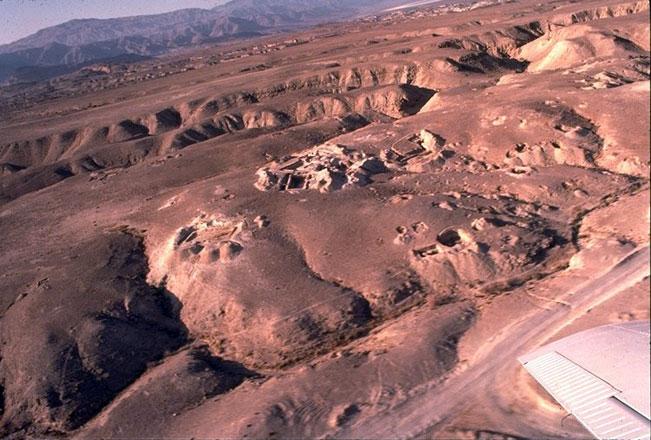AMMAN — Scholars researching the Early Bronze Age (EBA) (2000–1500BC) in the region say people during this period likely faced some of the same challenges the world faces today.
Archaeologist have been excavating walled settlements in the region for more than a century, which has provided clues about four major transformations to society with the advent of small-scale urbanism.
“First, people throughout the region left their farms, hamlets and villages to build and move into fortified sites. Archaeologically, we see evidence for this in the types of pottery and chipped stone tools we find lying on the ground at sites throughout the area,” said Meredith Chesson, an American anthropologist.
From these artefacts, scholars can infer that EBA “small-scale urbanism, small villages and farmsteads scattered throughout the region disappear and people seem to congregate in these large, fortified communities”.
In order to support these new larger communities, people had to develop techniques to increase food production. “When we study ancient plant remains from EBA sites, such as wheat, barley, olives and grapes, we see evidence for irrigation,” Chesson said.
At Numayra, an archaeological site near the Dead Sea, Chantel White, who is an ancient plant remains specialist from the University of Pennsylvania, found that the grapes, barley and wheat had been grown by farmers relying on irrigation systems to help water their crops and orchards, according to Chesson.
Communities then had to store these larger amounts of food in “administrative compounds full of storage silos and large storage jars”, Chesson noted, adding that some sites from the era developed both household and larger communal water collection reservoirs and cisterns.
Recent archaeological research in the Eastern Desert of Jordan at Jawa and other similar sites, also show civic efforts to harvest and manage water, the anthropologist said, underlining that managing stored food and water outside of people’s homes would have required a group of people to collect, manage and then redistribute the goods to families within the communities.
The organisation that would have been required to administer these services points to some type of governing body “or even wealthier people within these communities who managed these crucial resources”, the scholar highlighted.
Lastly, with greater numbers of people living together in these communities, archaeologists have found evidence that some inhabitants had greater access to resources, especially goods that were made far from their areas, she explained, adding that the evidence for growing social inequality during the period has been discovered by excavating inside walled communities and cemeteries.
“In several fortified towns, excavators have found large non-residential compounds that they argue were palaces or administrative compounds for storing foodstuffs,” Chesson said.
Some of the same sites have also contained ritual compounds, she elaborated, adding that the people who worked in these non-residential spaces likely controlled more decisions about what types of food were collected and redistributed, and they may have enjoyed “higher status in the community and close links to those governing these towns”.
Regardless of a gap in the database, researchers know that EBA inhabitants faced at least two serious challenges arising from the need to build and maintain sustainable communities.
“One of the most fundamental questions about urban communities, in the past and today, asks how do community members work together to establish a system where everyone can be fed and housed,” Chesson said. “The second challenge emerges from creating social, economic and political institutions to help govern... so that interpersonal conflict does not threaten the future of the community.”
Source: www.jordantimes.com
